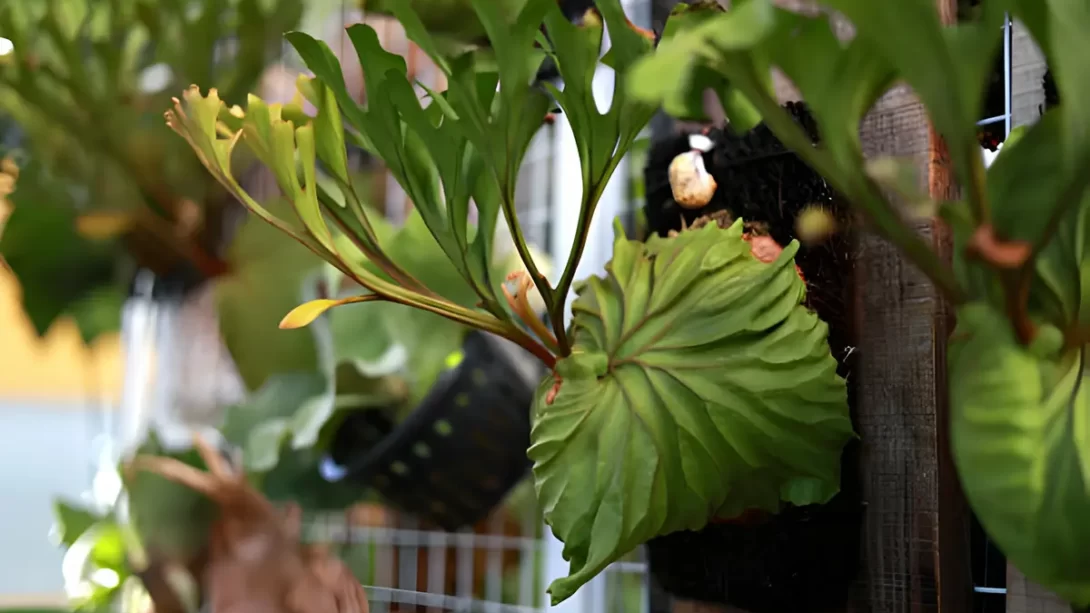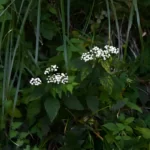Staghorn Ferns (Platycerium spp.) are among the most exotic and visually striking plants, known for their unique growth pattern and antler-like fronds. In their natural habitat, these ferns are epiphytic, meaning they grow on other plants or trees rather than in soil. Mounting a Staghorn Fern not only mimics its natural growing conditions but also turns it into a living piece of art, adding a dramatic flair to any indoor or outdoor space. This article will guide you through the process of successfully mounting a Staghorn Fern, ensuring it thrives in its new setting.
Staghorn Ferns
Staghorn Ferns are native to tropical and subtropical regions, where they attach themselves to tree trunks and branches. This epiphytic lifestyle allows them to receive ample air circulation and catch moisture and nutrients from the environment. Understanding this natural propensity for growing on other surfaces is crucial when deciding to mount these ferns. It’s essential to replicate these conditions as closely as possible, considering factors like location, light, and humidity for the mounted fern.
Materials Needed for Mounting
To start, gather the following materials: a wooden plank or board, sphagnum moss, fishing line or nylon thread, nails or screws, a hammer or drill, and your Staghorn Fern. The wood acts as a support base, mimicking a tree trunk or branch. The size of the wooden plank should be chosen based on the size of your fern and anticipated growth. Opt for untreated wood to avoid chemicals that could harm the plant.
Preparing the Mount
Before mounting the fern, prepare your wooden base. If desired, treat the wood with a non-toxic sealant to prolong its life, especially if it will be hung outdoors. Next, attach a sturdy hanging mechanism to the back of the mount, ensuring it can support the weight of the fern and its base. This could be a strong wire or a bracket, securely fastened to the wood.
Preparing the Fern for Mounting
Carefully remove the Staghorn Fern from its current pot, being gentle to avoid damaging the roots. Shake off any excess soil and inspect the roots, trimming away any that are dead or excessively long. This preparation is crucial for a healthy transition to the mounted structure.
Mounting Process
The actual mounting process is both creative and methodical. Follow these steps to ensure your Staghorn Fern is securely and aesthetically mounted:
- Layering Sphagnum Moss: Begin by soaking sphagnum moss in water for about an hour, then squeeze out the excess moisture. This moss serves as the primary medium for your fern’s roots. Create a thick layer of moss on the wooden mount where the base of the fern will sit.
- Positioning the Fern: Place your Staghorn Fern onto the moss, arranging it so that the base of the plant (where the roots meet the stem) is in contact with the moss. Ensure that the fern’s fronds are positioned in a way that they can grow outward and upward from the mount.
- Securing the Fern: Using the fishing line or nylon thread, gently but firmly tie the fern to the mount. Start at the base and work your way around, making sure not to tie too tightly as this could damage the fronds. The goal is to secure the fern to the mount until its roots grow into the moss and naturally adhere to the wooden base.
Aftercare for Mounted Staghorn Fern
Once mounted, the care you provide your Staghorn Fern is crucial for its health and growth.
- Watering: Mounted Staghorn Ferns require frequent watering, as the exposed roots and moss dry out faster than soil. Mist the plant regularly and soak the moss in water weekly, or more often in dry conditions. Ensure that the moss is moist but not soggy to prevent root rot.
- Feeding: Fertilize your fern monthly during the growing season with a diluted liquid fertilizer. This will provide the necessary nutrients for growth and health.
- Light and Humidity: Place your mounted fern in a location that receives bright, indirect light. Staghorn Ferns thrive in high humidity environments, so consider their placement in relation to humidity sources in your home.
- Long-term Care: As your fern grows, periodically check and adjust the ties, ensuring they are not too tight. Trim any dead or dying fronds to encourage new growth.
Troubleshooting Common Issues
Even with proper care, you may encounter some challenges with your mounted Staghorn Fern. Here are common issues and how to address them:
- Overwatering or Underwatering: If the fronds start to yellow or wilt, this could indicate either overwatering or underwatering. Adjust your watering schedule accordingly, ensuring the moss is consistently moist but not waterlogged.
- Pests: Pests like scale or mealybugs can occasionally infest Staghorn Ferns. Inspect your fern regularly for any signs of pests and treat promptly with insecticidal soap or neem oil.
- Insufficient Light: Lackluster growth or small, pale fronds can be a sign of inadequate light. Consider moving your fern to a brighter location with indirect sunlight.
- Humidity Issues: Brown tips on the fronds may indicate low humidity. Increase air moisture around the plant through misting or using a humidifier.
Long-Term Maintenance
As your Staghorn Fern grows, it will require some ongoing maintenance:
- Root and Frond Trimming: Over time, the fern may outgrow its mount. Trim the roots and older fronds as needed to manage its size and promote new growth.
- Re-Mounting: If your fern outgrows its mount, you may need to transfer it to a larger mount. Follow the same mounting steps, being extra careful with the matured roots and fronds.
- Cleaning: Dust the fronds occasionally to keep them healthy and ensure efficient photosynthesis.
Conclusion
Mounting a Staghorn Fern is a rewarding endeavor, transforming this unique plant into a living work of art. By following the steps for proper mounting, providing the right care, and addressing any issues promptly, your Staghorn Fern can thrive and bring a touch of tropical elegance to your space. Remember, patience and consistent care are key. Enjoy the process and watch as your fern grows into a stunning display of natural beauty.



